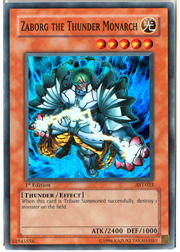
Deciding what to play in a Shonen Jump Championship has never been harder. The last four have been won by four entirely different archetypes. Emon Ghaneian took Houston by storm with his take on Bazoo/Card Trooper Return. Many believed his win would set a trend for upcoming tournaments, with the top tables being filled with “Bazooper” and anti-Return decks.
Then, to everyone’s surprise, the format flip-flopped entirely. The aggressive metagame in Houston was replaced almost entirely by a much more conservative one at Columbus. Lazaro Bellido, Shane Scurry, and Phillip Anthony all made Top 4 with Monarch decks. Despite what appeared to be a return to the throne for Monarchs, these players were all ousted by Marc Glass, who proved that Kris Perovic’s 2nd place finish with Diamond Dude Turbo at Houston was no fluke. Glass won the event undefeated, placing DDT at the top of the pack.
SJC Montreal strolled around, and every top deck made Top 8. Four well-known players each placed with similar Monarch builds. Joining them in the Top 8 was a Chain Strike burn deck from Jasmin Gauthier, a Demise OTK deck piloted by Andre Borges, Kris Perovic’s Diamond Dude Turbo, and a “Bazooper Return” deck in the hands of Jonathan Chauvin. After the dust settled, Cesar Gonzalez was the champion, and the dominance of Monarchs was all but reasserted.
At SJC Anaheim, it was time for Demise OTK to take the stage. Three of the Top 8 competitors played Demise OTK, with Michael Songloke’s variant taking home the Championship title. Where does this leave us now? There are five decks all clawing for the top spot, which means players have a whopping five decks to choose from. In addition, this means that SJC competitors now have five decks to side for. Since you can’t really side-deck for all five matchups well with only 15 cards, you’ll have to make sure your main deck is versatile enough to stand a chance against any of these builds.
While each of these decks is very strong, there’s no doubt that each one has an incredibly weak matchup against at least one of the others. Therefore, in order to eliminate as many bad matchups as possible, Andrew Novoa took this deck to Top 8 success at Anaheim:
Monsters: 21
1 Dekoichi the Battlechanted Locomotive
1 D.D. Assailant
 3 Card Trooper
3 Card Trooper
1 Sangan
2 Mystic Tomato
3 Cyber Dragon
3 Zaborg the Thunder Monarch
1 D.D. Warrior Lady
3 Gravekeeper’s Spy
1 Spirit Reaper
1 Treeborn Frog
1 Jinzo
Spells: 13
1 Pot of Avarice
1 Enemy Controller
1 Mystical Space Typhoon
1 Confiscation
1 Creature Swap
1 Brain Control
1 Smashing Ground
1 Nobleman of Crossout
1 Scapegoat
1 Heavy Storm
1 Premature Burial
1 Snatch Steal
1 Book of Moon
Traps: 6
1 Mirror Force
1 Ring of Destruction
1 Call of the Haunted
1 Torrential Tribute
1 Sakuretsu Armor
1 Bottomless Trap Hole
Andrew Novoa’s deck is very similar to the one Keanson Ye ran at Houston and Anaheim: an aggressive hodgepodge designed for versatility. Take a look at the spell and trap lines. There isn’t a single card with multiple copies. While in many cases this is because that card is Limited to one, more conventional selections such as Smashing Ground, Sakuretsu Armor, and Brain Control have been swapped out for more risky cards that give Novoa depth in his spell and trap line-up.
The trap line-up plays one copy each of the popular trap cards, but cuts out any extra copies of Sakuretsu Armor or Bottomless Trap Hole to allow for more space in the spell line-up. Novoa can get away with this because of how the deck plays. Many of Novoa’s monsters play defensively quite well. D. D. Assailant and D.D. Warrior Lady are two exceptional monsters for either attacking or defending. Their impressive stats and ability to remove the monster that destroys them from play mean that Novoa can simply throw them on the field and not worry about their fate. Mystic Tomato and Sangan work the same way, replacing themselves with other monsters from the deck. In addition, both of these cards can support the high-level monsters requiring tribute that Novoa played.
Card Trooper is quickly becoming the most popular monster in the game, swinging in for a potential 1900 damage. Since its draw effect works while Trooper is face up or face down, it is an excellent monster to either attack with or set. Setting Trooper face down can be particularly rewarding if the opponent destroys it with Zaborg the Thunder Monarch or Exiled Force. There are very few situations in which one wouldn’t want Card Trooper, which is why this is one of the few cards to capture three slots in the deck.
Gravekeeper’s Spy makes the cut for her strength against almost every matchup. Whether you’re playing against Monarchs or “Bazooper,” bumping out extra 2000 DEF monsters is never a bad thing.
The spell line-up for this deck promotes the idea of versatility. Most players now are aware of how to counter spells like Brain Control and Smashing Ground, or at least reduce their impact. However, many leave themselves vulnerable to the effects of cards like Creature Swap or Scapegoat. These neglected cards can turn the tide of the game entirely. The toolbox of Novoa’s spell line-up keeps opponents from being able to stop him by using the same tricks. They will have to stay on their toes, and unless they’re both very good and have drawn all the necessary cards to counter Novoa’s wide range of options, they’ll find themselves moving on to the next round with a loss very quickly.
Keeping your deck flexible is an excellent strategy, which has paid off for both Andrew Novoa and Keanson Ye. If you’re excellent at spotting which cards will work best for every scenario you find yourself in, this just might be the deck for you.